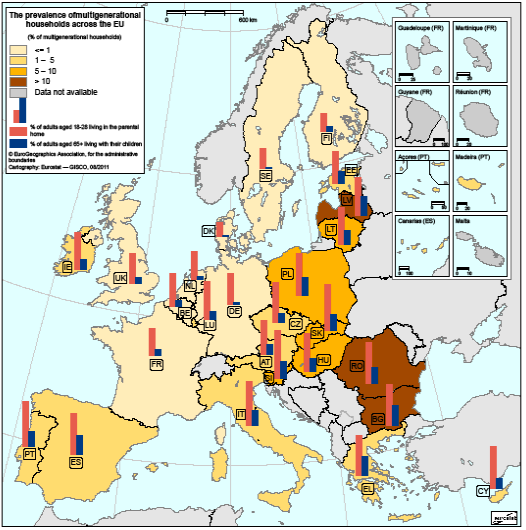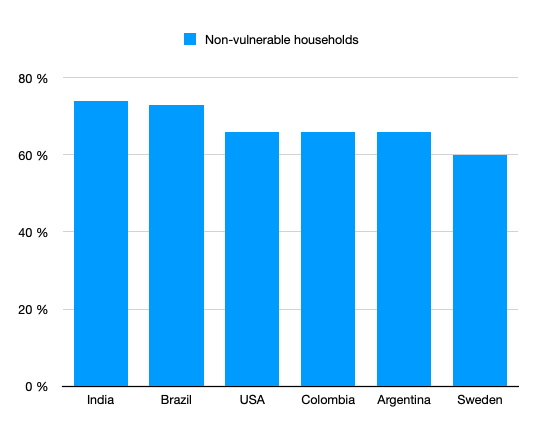The Swedish Strategy can be summed up as: protect the vulnerable, let non-vulnerable to socialize by keeping schools, restaurants and bars open. 1/13. https://twitter.com/federicolois/status/1298631595339980806">https://twitter.com/federicol...
This makes sense. We know since March that infection fatality rate (IFR) is between 2 and 3 orders of magnitude lower for age groups below 60yo. (The Non-Vulnerable). 2/13 https://twitter.com/federicolois/status/1297025457595060226">https://twitter.com/federicol...
Sweden needed 600 ICUs in the peak and has converged to a 600 per million population fatality which is a full 1 order of magnitude less than what was predicted by early (and poorly calibrated) models from Imperial and IHME. 3/12 https://twitter.com/HaraldofW/status/1275343105449918465">https://twitter.com/HaraldofW...
Even if some are willing to admit that the Swedish strategy was generally pretty successful, all of the sudden arguments come up on why you couldn& #39;t do that in country X, and why Sweden is so different. 4/13
The general argument is "demographics are unique”. The Swedish have less multi-generational households than many other countries, especially third-world countries. This is a fact, Sweden has <= 1% multi-generational households. 5/13
https://ec.europa.eu/eurostat/documents/3433488/5579620/KS-SF-11-052-EN.PDF/9a190f6f-8949-4d3d-99ad-989479c6b23b">https://ec.europa.eu/eurostat/...
https://ec.europa.eu/eurostat/documents/3433488/5579620/KS-SF-11-052-EN.PDF/9a190f6f-8949-4d3d-99ad-989479c6b23b">https://ec.europa.eu/eurostat/...
By multi-generational households usually one means younger and older people living together, that is, Vulnerable (>=60) and Non-vulnerable (<60) cohabitating. 6/13
The narrative goes: Sweden could "afford" its strategy because non-vulnerables would mix less with vulnerables. This looks plausible and has not really received much challenge so far. 7/13.
However, if you go for general lockdowns, you also stop Non-vulnerables from contributing to community immunity. Lockdowns are not perfect and community spread is common as we have seen notably in Latin America. 7/13 https://twitter.com/federicolois/status/1298631459218034688">https://twitter.com/federicol...
What would have happened if other countries had decided to emulate “The Swedish Way”? How do countries compare in terms of non-vulnerable households? Then it& #39;s fair to ask: How many *non-vulnerable households* (without members of 60+ yo)? How does this compare to SWE? 8/13.
In 2019, Sweden had 60% households with no vulnerable members (<60, source: SCB, Sweden, e-mail communication). 9/13
And other countries? India: 74%, Brazil: 73%, Argentina, Colombia and USA 66% just to name a few. Since younger households tend to be bigger, we can infer that at least 70% of the population lives separately from the vulnerable population. 10/13.
https://www.un.org/en/development/desa/population/publications/pdf/ageing/household_size_and_composition_around_the_world_2017_data_booklet.pdf">https://www.un.org/en/develo...
https://www.un.org/en/development/desa/population/publications/pdf/ageing/household_size_and_composition_around_the_world_2017_data_booklet.pdf">https://www.un.org/en/develo...
Multigenerational households are by this definition "vulnerable" because they have at least one member in the vulnerable class. 11/13
Multigenerational households SHOULD be considered vulnerable and take special precautions. But, judging by the isolation capability vulnerables from non-vulnerables, many countries are in an even better position than Sweden. 12/13
If they can, and it may be counterproductive to do so, the question that begs to be asked is: Why isolate everybody then?
Thanks to @federicolois, @HaraldofW, @gummibear737 and @Akustronique for valuable discussions on this topic. 13/13
Thanks to @federicolois, @HaraldofW, @gummibear737 and @Akustronique for valuable discussions on this topic. 13/13

 Read on Twitter
Read on Twitter



